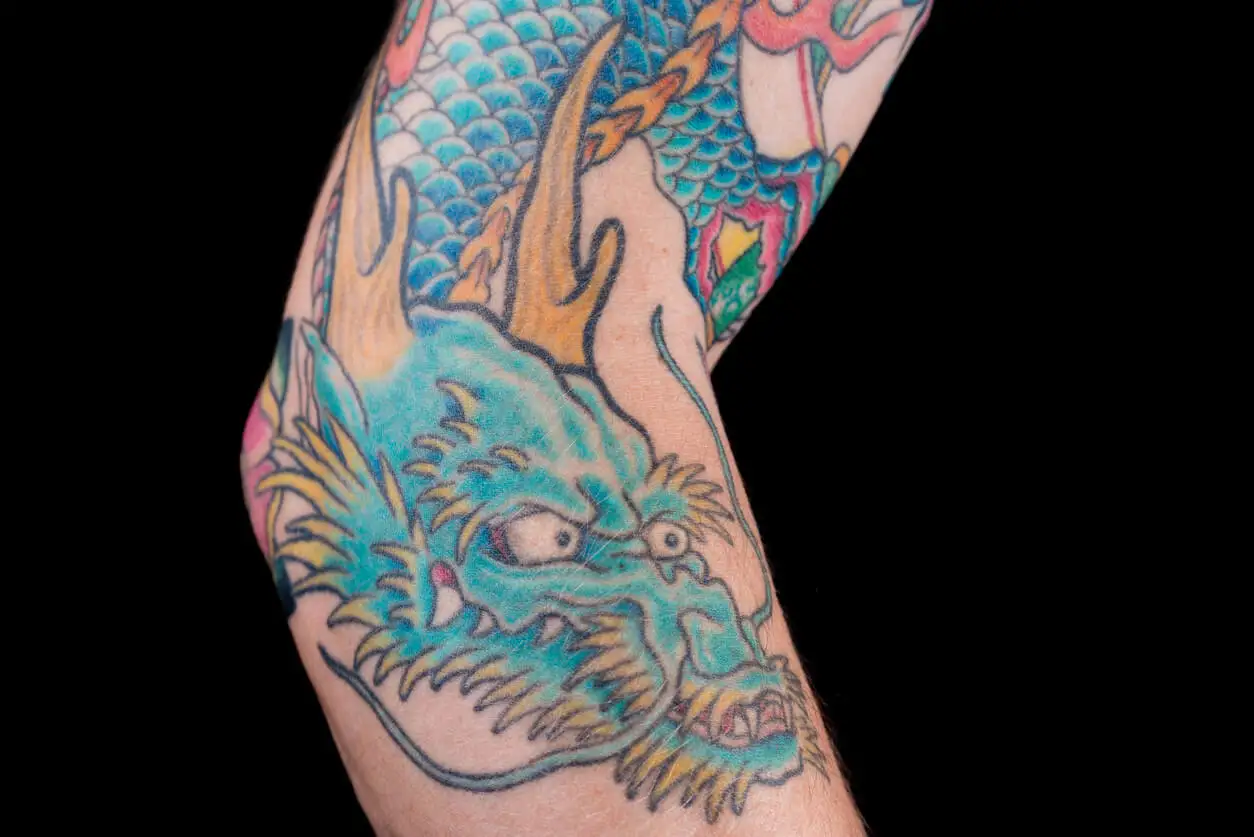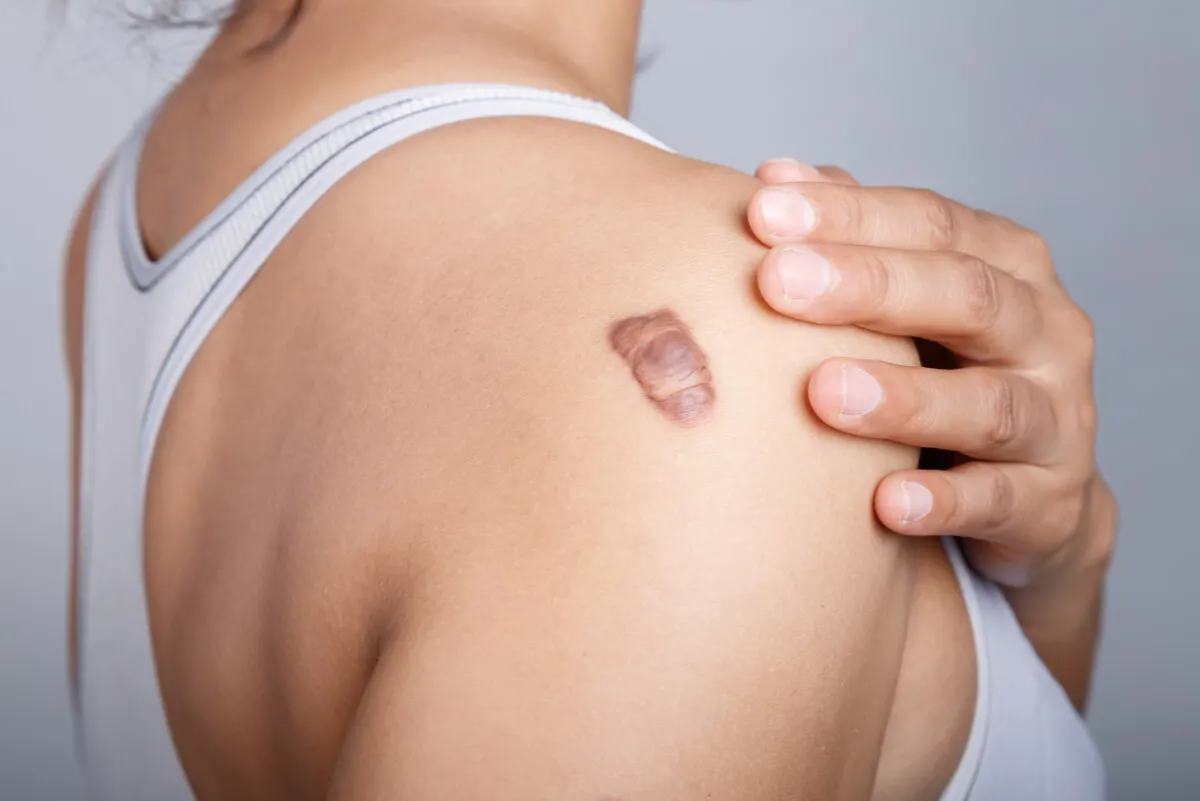What Are the Risks of Laser Tattoo Removal?

Engraving the skin with ink no longer “lasts forever”. That concept is a thing of the past because now you can erase a tattoo with a laser. The process is not so simple, but the technique of laser tattoo removal promises effectiveness.
Tattooing is the act of introducing dyes under the epidermis through skin punctures. Those who decide to apply them know that it’s something they can’t reverse (until now).
However, there’s an increasing demand to remove or update the images, using less invasive and painless technology. Although we do have this new laser tattoo removal option, it’s important to take into account the possible dangers of undergoing high-intensity pulsed energy sessions.
All about the laser tattoo removal process
An article in Cirugía Plástica Ibero-Latinoamericana highlights that erasing a tattoo with laser involves major steps to achieve aesthetic results, but with minimal side effects.
To achieve this, it’s necessary to use devices authorized by the Food and Drug Administration (FDA). Modern devices work with pulse emission in picoseconds and nanoseconds, fractioning the pigment by photoacoustics, so that the body releases the ink.
However, it’s the color of the tattoo that defines the type of laser to be used. According to the aforementioned magazine, the alternatives to ultrashort pulse lasers are Q-Switched, in their “ruby”, “alexandrite” and “Nd-YAG” variations.
The classification is based on intensity, since different shades of ink absorb light at different wavelengths. Sometimes it’s necessary to use more than one type of device, as some pigments are very difficult to remove.

How many sessions are needed to remove a tattoo with laser?
Some people remove their tattoos in 2 sessions; others require more time. The number of visits to the dermatologist to erase them are conditioned by the following aspects:
- Color
- Size
- Location
- Age
- Skin tone
- Amateur or professional engraving
Even smoking affects the procedure, as indicated by a publication in The Wall Street Journal. The argument is that smoking hinders wound healing.
For its part, the Spanish Academy of Dermatology and Venereology recommends that 6 to 8 weeks elapse between sessions, so that the body has time to get rid of the pigment and for the skin to recover.
Patience is essential. Especially because each part of the body reacts differently.
What happens is that the cells that fight foreign elements are concentrated in specific points, such as the groin, armpits, and neck. When the engraving is far away from those areas, removing it is more difficult.
Read more: What Are the Risks of Using Black Henna for Tattoos?
Risks of laser tattoo removal
The procedure is delicate, but safe, when performed by a professional with the proper equipment. If you plan to use lasers to remove a tattoo, here are the possible risks you will face.
Unsuitable instruments
Any beauty salon is likely to offer tattoo removal services. But it’s imperative that this work is performed by a professional. The dermatologist is the main person in charge of manipulating the machinery and knowing the technology in detail.
Both the expert’s expertise and the implements at their disposal are key to the success of the removal. The image may require several lasers, especially if it’s multicolor. It’s the experience of the specialist and the mastery of the instruments that guarantee excellent results.
Pain
Some people don’t experience pain; it all depends on their tolerance to the pulses. The treatment is regulated to a comfortable level for the patient.
Testimonies of those who have already had their tattoos removed compare the pain experienced to splashes of hot fat or being hurt by an elastic band.
To reduce the intensity of the pain, you can apply an anesthetic cream one hour before the treatment and provide cold air during the light emissions.
Scars
An error in applying this technique could cause scars or fibrosis. There’s also the risk of burns, infection, or changes in skin texture. The immune system has a lot to do with this, as it influences the speed or slowness of healing.
In this regard, the journal Facultad de Medicina explains that the healing process depends on cellular action that stimulates the growth, repair, and remodeling of the tissue, in order to restore its characteristics.

Itching, blisters, and welts
Remember that the purpose of the light emitted is to eradicate the ink particles impregnated in the epidermis. The power released by the laser tends to provoke these reactions:
- Skin sensitivity in general
- Redness
- Swelling
- Blisters
- Hives
- Itching
It’s advisable to let the condition heal on its own to avoid more serious effects. If the discomfort continues, only a physician can prescribe medication.
Changes in skin pigmentation
Hyperpigmentation or hypopigmentation, i.e. darkening or lightening of the skin, is another risk of tattoo removal with laser technology.
These changes in the treated complexion are infrequent. If they occur, they’re reversible in under a year after the procedure is completed.
As a precaution, before tattoo removal sessions on tanned skin, it’s advisable to apply sunscreen at least 30 days prior to treatment. Afterwards, you must strictly protect the area from the sun’s rays; otherwise it won’t heal properly.
Watch out for dubious remedies to remove a tattoo
The FDA hasn’t authorized creams or ointments to remove tattoos, as it isn’t aware of any clinical studies that demonstrate their effectiveness. Using ointments can cause unexpected skin reactions.
A micro-pigmentation system that injects a substance based on lactic acid into the tattoo has recently been launched on the market. It’s believed that this method causes inflammation and that the ink is trapped in a crust. However, there’s no long-term research on the subject.
Finally, don’t forget that dermatologists are the best people to treat your skin with a laser. It’s possible to find approved centers. In this case, check that they have the relevant health authorization and that the technician demonstrates certification and expertise.
All cited sources were thoroughly reviewed by our team to ensure their quality, reliability, currency, and validity. The bibliography of this article was considered reliable and of academic or scientific accuracy.
- Ácido láctico. Instituto Nacional del Cáncer. Estados Unidos. https://www.cancer.gov/espanol/publicaciones/diccionarios/diccionario-cancer/def/acido-lactico
- Castro T, Trelles MA, Vélez M. Tatuajes y su eliminación por láser. Cirugía Plástica Ibero-Latinoamericana. Vol. 39. Núm 2.pp. 195-205. España; 2013. https://scielo.isciii.es/pdf/cpil/v39n2/original14.pdf
- Corbett Dooren J. ¿Qué tipo de tatuajes son más difíciles de quitar? The Wall Street Journal. Estados Unidos; 2012. https://www.wsj.com/articles/SB10000872396390444024204578044653532612788
- Eliminación de tatuajes: Opciones y resultados. Food & Drug Administration. Estados Unidos; 2018. https://www.fda.gov/consumers/articulos-en-espanol/eliminacion-de-tatuajes-opciones-y-resultados
- Guarín-Corredor C, Landínez-Parra NS, Quiroga-Santamaría P. Proceso de cicatrización de heridas de piel y su relación con las heridas crónicas. Facultad de Medicina. Universidad Nacional de Colombia. Vol. 61. Núm. 4. pp. 441-448. Colombia; 2013. http://www.scielo.org.co/pdf/rfmun/v61n4/v61n4a14.pdf
- Muñoz Gandía D. Tatuajes, ¿son para siempre? Academia Española de Dermatología y Venereología. España; 2014. https://aedv.es/comunicacion/notas-de-prensa/tatuajes-son-para-siempre/
- Nanosegundos, tiempo. Convertworld.com https://www.convertworld.com/es/tiempo/nanosegundos.html
- Picosegundo a segundo. CalcProfi. Calculadora online. http://extraconversion.com/es/tiempo/picosegundos
- Tatuar. Real Academia Española. https://dle.rae.es/tatuar
This text is provided for informational purposes only and does not replace consultation with a professional. If in doubt, consult your specialist.








